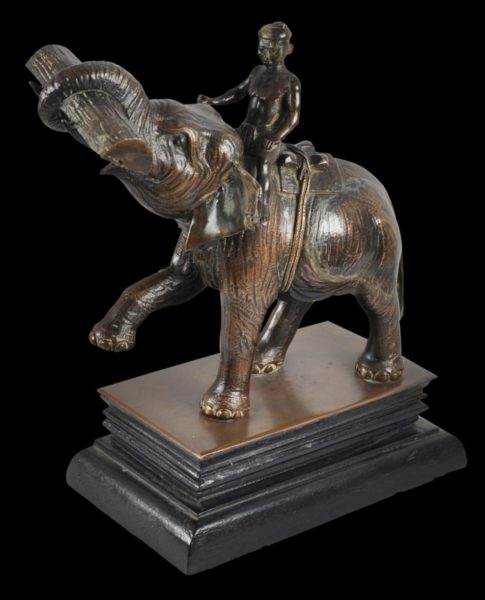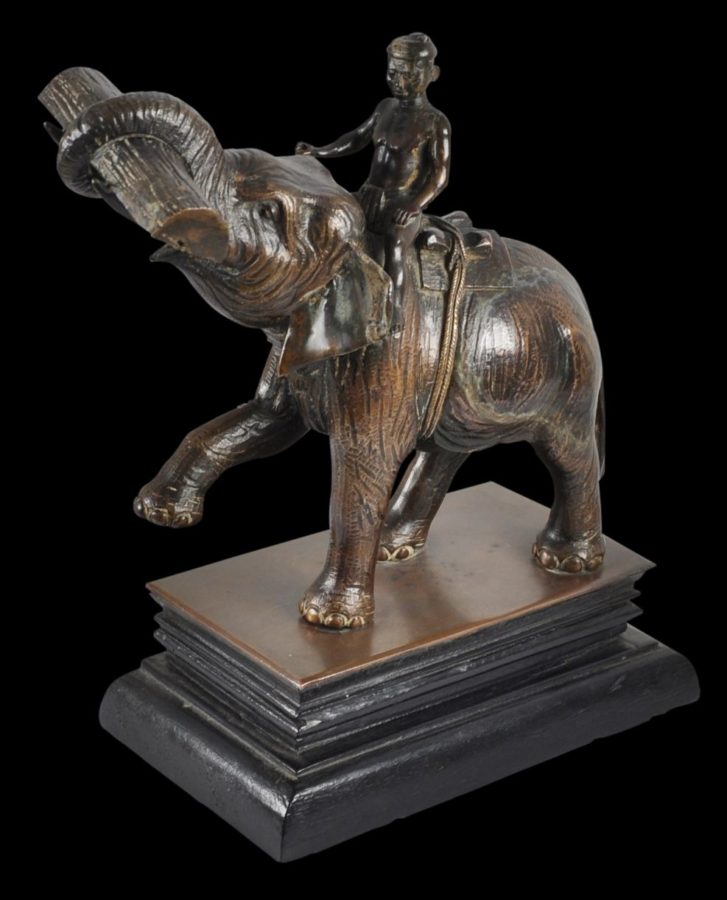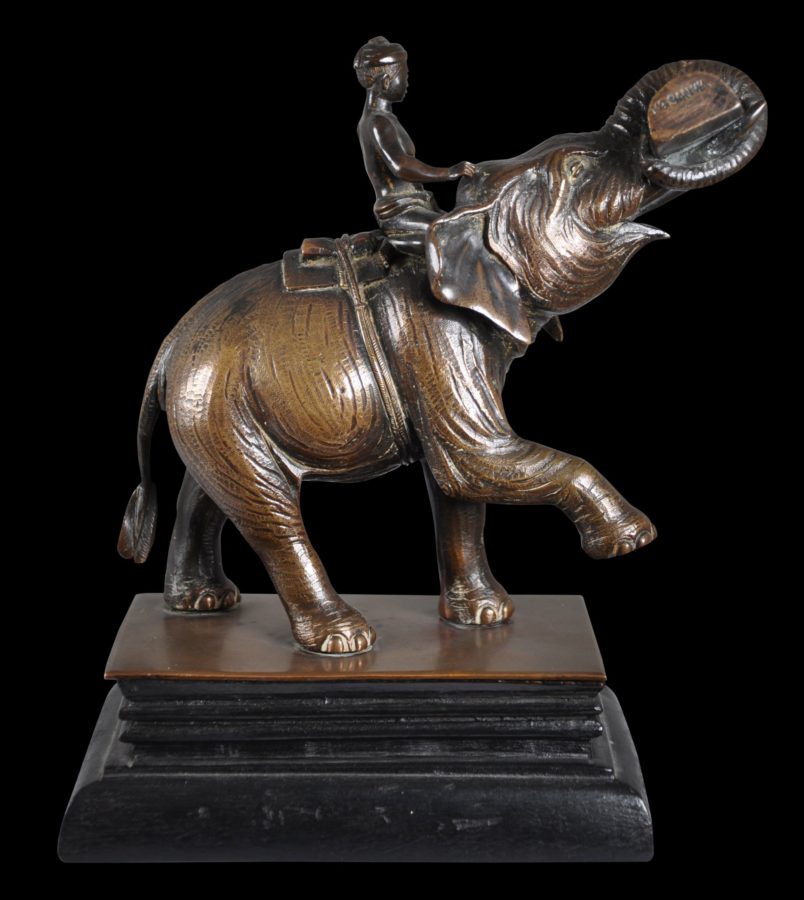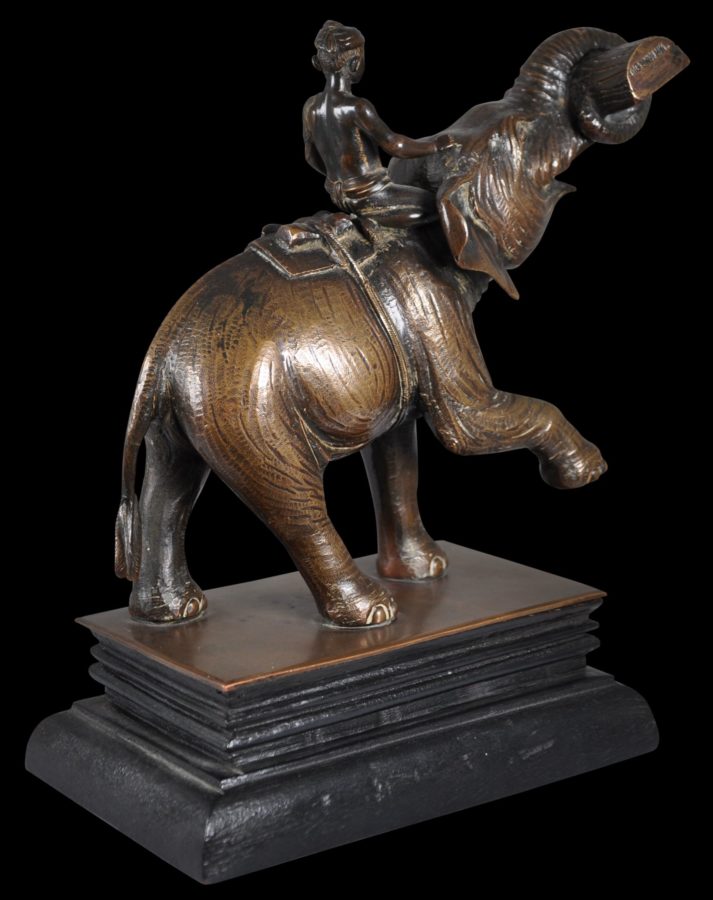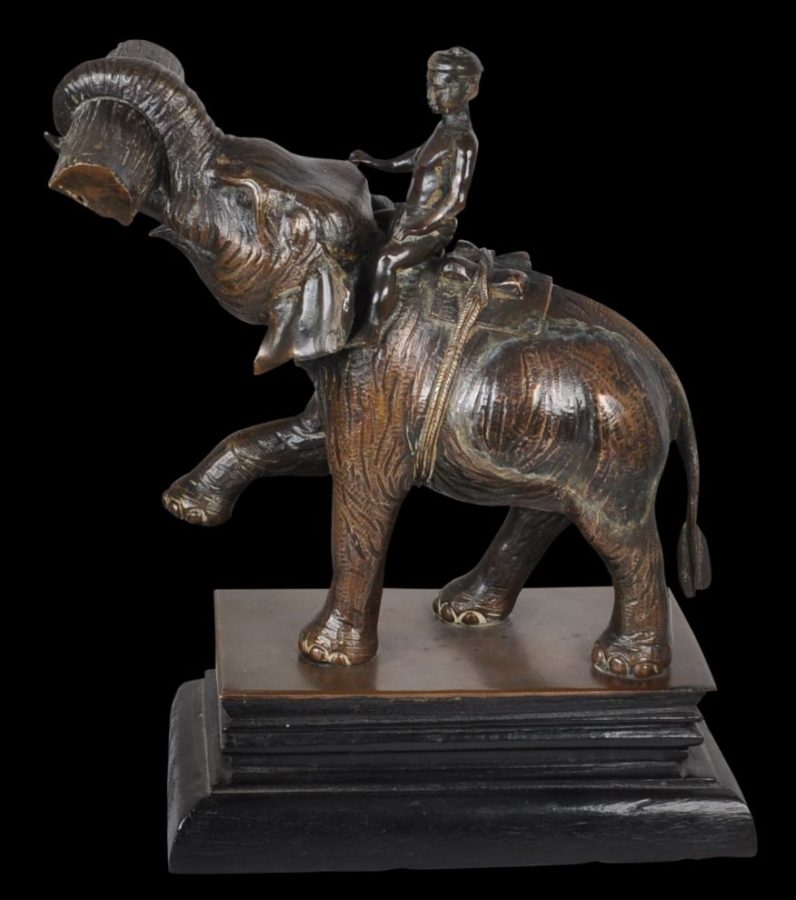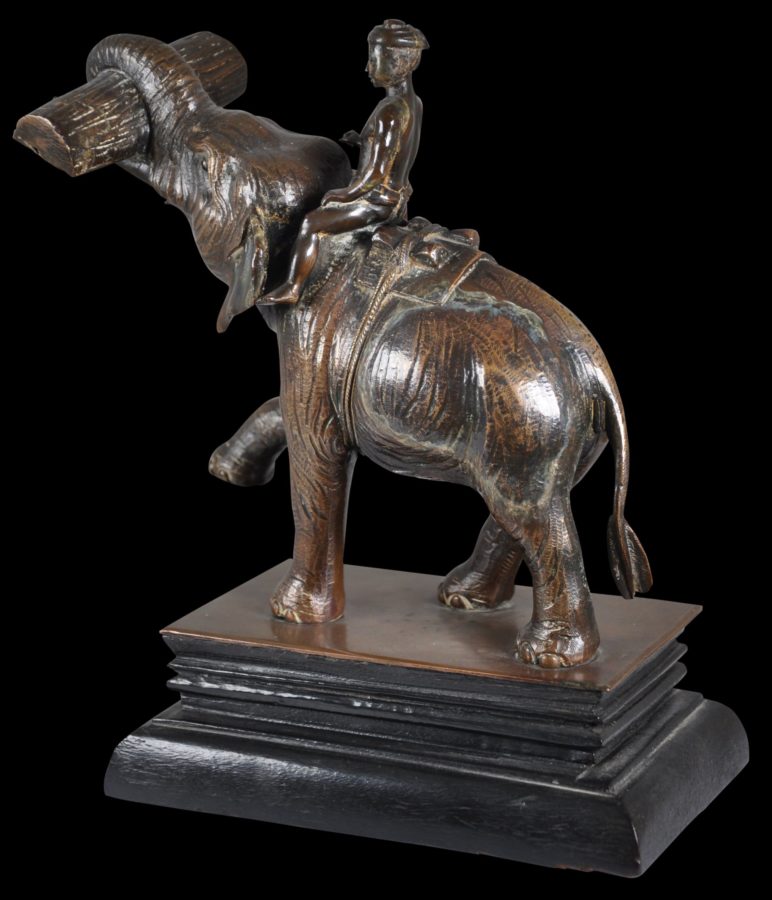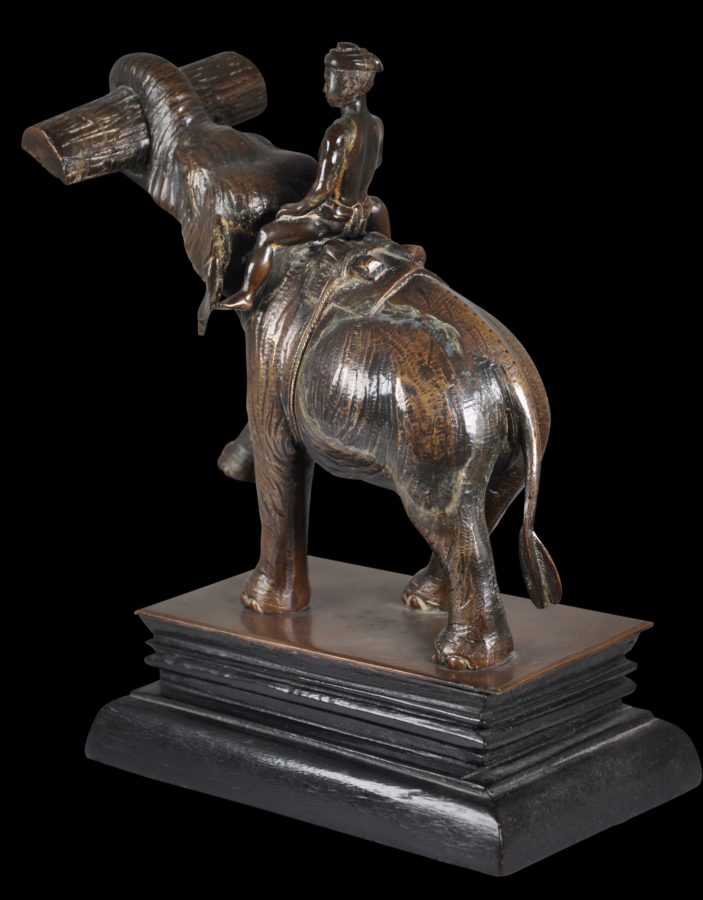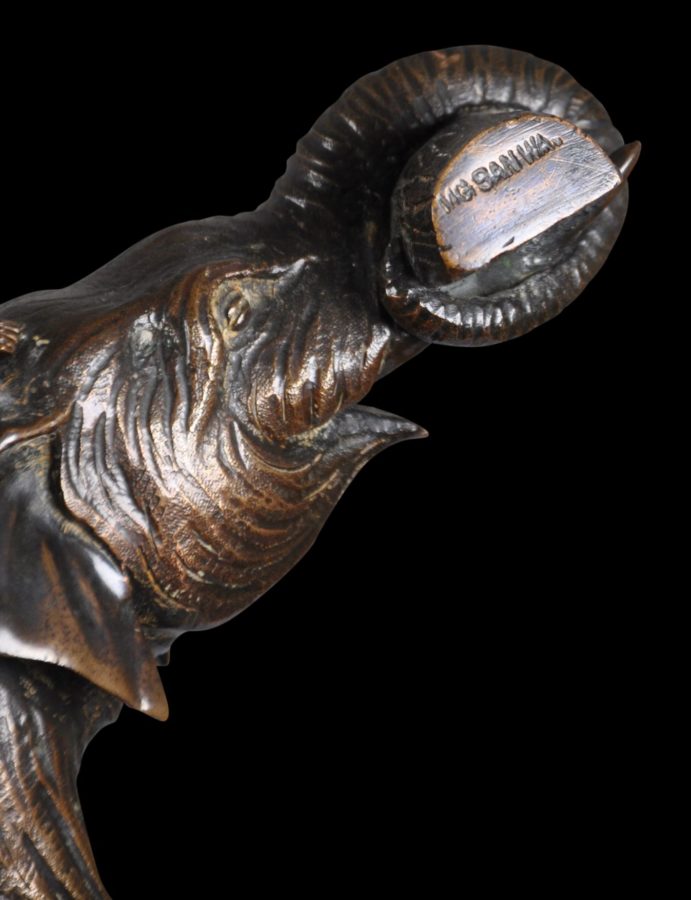This dynamic figure of a mahout astride a working elephant that is shifting a teak log in its trunk, is superbly rendered.
The muscular rider is naked other than for a loin cloth and a strip of cloth wrapped about his head. The elephant strides forwards, one front foot is held aloft, and his head and trunk strain as the log is lifted.
The leathery, textured skin of the elephant is beautifully and realistically captured.
The artist’s name is cast into one end of the log, as ‘Mg San Wa’ (Mg is the shortened rendering of Maung).
Figurines such as this example were bought by British administrators and their families in Burma as souvenirs and gifts for friends on their return home. As Sylvia Fraser Lu (1994, p. 143) says, some examples barely rise above tourist kitsch, but others such as the shown here, with its sense of proportion, realism and attention to detail is a minor masterpieces of bronze casting.
Such bronzes were produced in Pegu (known today as Bago), which is almost 100 kilometres north-east of Rangoon (Yangon).
The figure is attached to its original wooden stand.
The stand and image are in fine condition and both have a fine patina consistent with a 1920s dating. Overall, it is one of the best examples of a colonial Burmese bronze of this type that we have seen.
References
Fraser-Lu, S., Burmese Crafts: Past and Present, Oxford University Press, 1994.


